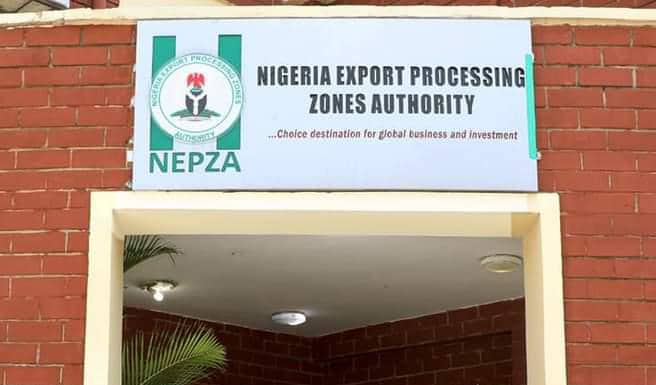The National Pension Commission (PenCom) has issued a regulation on the investment of pension fund assets. PenCom’s director-general, Aisha Dahir-Umar, answers questions on pension fund investments by Pension Fund Administrators (PFA).
Pension Fund Administrators invest all contributions made under the Contributory Pension Scheme (CPS) with the objective of safety and fair returns on the amount invested. What guides PFAs’ investment decisions under the CPS?
All Licensed Pension Fund Operators (LPFOs) are expected to conduct their investment activities in line with the requirements of the Regulation on Investment of Pension Fund Assets (Investment Regulation) issued by the National Pension Commission. The Investment Regulation is the reference document on all investment activities carried out by LPFOs and sets out rules and standards for investing pension funds. Specifically, the Investment Regulation provides the allowable markets, allowable instruments, quality requirements, rating requirements and general principles for investing pension fund assets by LPFOs.
It is pertinent to clarify that the Commission as a regulator, is responsible for establishing rules, guidelines and standards for pension fund investments by LPFOs. Consequently, making investment decisions is the sole responsibility of PFAs based on their internal investment guidelines and governance frameworks. Accordingly, all LPFOs must do their internal due diligence in line with the investment objectives of safety and fair returns before investing in any securities or issuer.
Advertisement
Pension funds and assets can only be invested in accordance with regulations and guidelines issued by the commission. To what extent have PFAs adhered to the investment regulations issued by the commission?
The commission has instituted monitoring mechanisms to ensure good conduct by LPFOs in the pension fund investment process. The monitoring system is to mitigate potential risks in the investment activities of LPFOs and to ensure strict adherence to the requirements of the Investment Regulation. Accordingly, noncompliance with the Investment Regulation and the PRA, 2014 are monitored and flagged by the Investment Supervision Department of the Commission. However, LPFOs have largely complied with the requirements of the Investment Regulation and PRA 2014 in the investment of pension fund assets. Furthermore, LPFOs conduct internal due diligence in identifying and selecting investment products to minimise risks to the investment portfolio.
Notably, the PRA 2014 and the Investment Regulations have instituted appropriate sanctions for any infraction by LPFOs in the investment process. Accordingly, the commission applies appropriate administrative sanctions to LPFOs for violation of the provisions of the Investment Regulations.
Advertisement
From the inception of the CPS, pension funds and assets could only be invested in particular instruments. What are the investment instruments acceptable for investment under the CPS?
The allowable instruments/asset classes that qualify for investment by pension funds are as follows:
1. Quoted Ordinary Shares and Redeemable Preference Shares of publicly listed companies: Ordinary Shares are ownership units in publicly listed companies. In contrast, Redeemable Preference Shares take precedence over Ordinary Shares in paying dividends and during the liquidation of companies.
ii. FGN/State/LG Debt Securities approved by SEC:These instruments of indebtedness (Bonds and Treasury Bills) are issued and guaranteed by the Federal, State and Local Governments.
Advertisement
iii. Corporate Debt Securities (including Infrastructure Bonds, Asset/Mortgaged Backed Securities): Corporate debt securities are instruments of indebtedness issued by corporate entities.
iv. Money Market Instruments: These include fixed deposits, tenured placements and Bankers’ Acceptances issued by financial institutions and Commercial Papers issued by corporate entities.
v. Open/Closed-end and Hybrid Funds (including Real Estate Investment Trusts and Exchange Traded Funds): These are specialist/managed investment funds that invest in securities and are tradable or have memorandum listing on a securities exchange.
vi. Supranational Bonds: These are debt instrumentsissued by eligible Multilateral Development Finance Institutions, e.g. International Finance Corporation and African Development Bank.
Advertisement
vii. Private Equity Funds: These are designated pools of investment capital targeted at all stages of private equity investment.
viii. Infrastructure Funds: Specialist Investment Funds that invest primarily in infrastructure companies or projects.
Advertisement
The state governments must comply with the Investment Regulation stipulated by the PRA 2014. What conditions must state governments fulfil for PFAs to invest in their securities such as bonds?
State governments can access pension funds through bonds or other securities issued by the State. However, the state governments must comply with the provisions of the Investment Regulation, which provides that issuers must fully implement the CPS by opening Retirement Savings Accounts (RSAs) for their staff and remitting pension contributions for them. Also, the state must procure a Group Life Insurance cover that guarantees a minimum of 300% of emoluments for its employees. Other conditions for state governments seeking to access pension funds include the following minimum requirements:
Advertisement
1. Enact a Law to establish the CPS, which must give pension contributions the same priority as salaries.
2. Establish a State Pension Bureau and a Local Government Pension Bureau to coordinate the implementation of the CPS and other related pension matters in the State.
Advertisement
3. Open and fund a Retirement Benefits Bond Redemption Fund Account with the Central Bank of Nigeria or any PFA from the date of the State’s remittance of pension contributions.
4. Must execute an Irrevocable Standing Payment Order (ISPO) to mandate the Accountant General of the Federation (AGF) to deduct at source and remit monthly pension contributions from the State’s share of the Federation Account Allocation to the State.
Are PFAs allowed to invest in offshore securities, and if not, why?
Section 87(1) of the PRA 2014 allows for foreign investment of pension fund assets subject to regulations and guidelines issued by the commission. Furthermore, Section 87(2) of the PRA 014 notes that subject to subsisting CBN rules, the commission may recommend to the President for approval the portfolio limits for the investment of pension funds or assets outside the territory of the Federal Republic of Nigeria. To give effect to the provisions of Section 87 (1 & 2) of the PRA 2014, the commission is developing draft Guidelines on the Foreign Investment of Pension fund assets by Pension Fund Administrators. The objectives of the guidelines are to hedge pension funds against inflation and currency devaluation and increase diversification benefits to the pension fund portfolio. Currently, the commission is engaging critical stakeholders, including the CBN, before the guidelines are finalised.
What is your take on the return on investment of pension funds in the last three years, considering the inflation rate, the Covid pandemic and the general downturn in the global economy?
Despite the Covid-19 pandemic and the general downturn of the economy in early 2020 and late 2021, pension Funds achieved moderate growth due to the inflow of monthly pension contributions and the subsequent response of the markets to the initial impact of Covid-19. The stable recovery of the markets began in early 2021 with the relaxation of restrictions associated with the containment of the Covid-19 pandemic. The economy grew by 3.41% in 2021 relative to an annual contraction of 1.92% in 2020. However, inflation remained a concern due to persistent disruption in domestic food supply chains and expansionary government policies. In early 2022, the global energy crisis occasioned by the Russia – Ukraine conflict added exchange rate pressures to the Nigerian economy.
Pension fund assets in the last three years were majorly invested in traditional fixed-income assets and equities, as the alternative asset space was relatively sluggish. Pension Funds recorded an average return on investment of 13% within the last three years (2019 -2021), with the highest return of 17.59% in 2020. Although the Nigerian economy is experiencing inflationary challenges with an inflation rate slightly above 17%, pension funds are expected to outperform the inflation rate given their long-term investment horizon. The modest growth of pension funds is expected to be sustained. At the same time, the industry focuses on increasing allocations to alternative assets to mitigate the impact of inflation and provide reasonable returns to contributors.
How have PFAs ensured the safety of pension funds while investing in various instruments across the financial markets?
The overall investment objectives of pension funds are to ensure safety and fair investment returns. PFAs act as fiduciaries to the pension fund assets under their management and are expected to abide by the dictates of the Investment Regulation in their investment activities.
What measures are put in place by the commission to guard against PFAs flouting the commission’s investment regulations and global best practices in investing pension funds?
The institutional framework of the CPS allows for separating the investment and custody functions between PFAs and Pension Fund Custodians (PFCs). By this arrangement, the PFAs and PFCs submit daily Returns on the investment portfolio to the commission. Accordingly, the commission ensures that investments of pension contributions are safe through daily monitoring of the investment decisions made by the PFAs to ensure compliance with the PRA 2014 and the Investment Regulation.
PFAs render to the Commission daily Returns on the investment portfolio via the Risk Management and Analysis System (RMAS). RMAS is a supervisory application for monitoring the investment activities of LPFOs. The commission reviews the returns forwarded by PFAs to ensure that investments are made in line with the Investment Guidelines to ensure the safety of pension fund assets.
It is worth noting that the Investment Regulation has instituted limits (global, per issuer and issue) to ensure adequate portfolio diversification and mitigate potential concentration and market risks. Per Issuer Limits specifically aims to limit pension fund exposure to a single issuer in line with the core objectives of Pension Fund Investments. Furthermore, rating reports on companies and securities are critical risk management tools deployed within the Investment Regulation to determine the issuer’s ability to repay its debt at maturity. Accordingly, PFAs are required to invest in Pension Assets based on the Credit Ratings of companies/securities and conduct due diligence in their investment activities. In addition, there are stringent provisions in the Investment Regulations that ensure the ring-fencing of the assets and allow investments only in instruments with minimal risks. The Investment Regulation stipulates these requirements to control counterparty risks.






